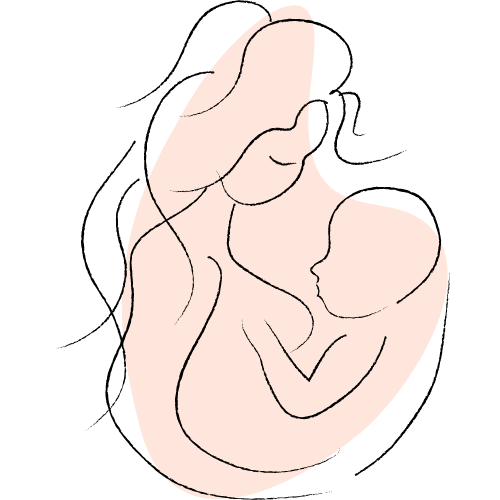Having a baby is a monumental experience, but when a C-section becomes necessary, it introduces a new set of challenges and recovery needs. If you’ve recently had a C-section or are preparing for one, understanding how to navigate the recovery process can make all the difference. Let’s dive into some smart recovery tips to help you heal efficiently and comfortably.
Understanding the C-Section Recovery
Recovery from a C-section involves more than just healing from a surgical procedure. It’s a process that affects your entire body and mind. Unlike a vaginal birth, a C-section involves a significant surgical cut through your abdominal wall and uterus, which requires a thoughtful and patient approach to healing.
What to Expect After a C-Section
Right after the surgery, you might feel groggy from anesthesia, and you’ll be in the recovery room for monitoring. Expect to stay in the hospital for a few days. During this time, the focus will be on pain management and ensuring that you and your baby are doing well. Your body will need time to adjust, and understanding what’s normal can ease some of the anxieties associated with recovery.
Managing Pain and Discomfort
Pain management is crucial for a smooth recovery. Post-surgery, you’ll likely experience some level of discomfort. Your doctor will prescribe pain relief medication to help manage this. It’s important to take the medication as directed and communicate with your healthcare provider if the pain is severe or persistent.
Tip: Think of your pain management plan like a road map. Just as you wouldn’t embark on a trip without directions, don’t navigate recovery without a clear plan for managing pain.
Importance of Rest and Sleep
Rest is your best ally in recovery. After a C-section, your body is working hard to heal from the surgery, so give it the rest it needs. Sleep might be elusive with a newborn, but try to rest whenever you can. Short naps during the day and a consistent night-time routine can help you recharge.
How to Care for Your Incision
Taking care of your incision is essential to prevent infection and promote healing. Keep the area clean and dry, and follow your doctor’s instructions on how to care for the incision. You may need to avoid certain activities that could strain the area.
Tip: Imagine your incision like a delicate garden. Just as a garden needs proper care and attention to flourish, so does your incision need gentle care to heal properly.
Navigating Physical Activity
After a C-section, it’s crucial to ease back into physical activity gradually. While light walking can help with circulation and mood, avoid heavy lifting or strenuous exercises until you get your doctor’s clearance. Overexerting yourself can lead to complications and hinder your recovery.
Nutritional Tips for Healing
Eating a balanced diet supports healing and boosts your energy levels. Focus on foods rich in vitamins, minerals, and protein. Hydration is also key, so drink plenty of water. Your body needs these nutrients to repair tissues and recover from surgery.
Dealing with Emotional Changes
It’s not just your body that needs to heal; your emotions may be on a roller coaster as well. Hormonal changes, coupled with the stress of recovery and caring for a newborn, can affect your mood. Reach out for support from loved ones or a mental health professional if you’re feeling overwhelmed.
Breastfeeding After a C-Section
Breastfeeding can be challenging after a C-section, especially with discomfort from the incision. Positioning is key—try different positions to find one that is comfortable for both you and your baby. Don’t hesitate to ask for help from a lactation consultant if needed.
Handling Complications During Labor
Complications during labor can impact your recovery. Common issues include infection, blood clots, or excessive bleeding. Understanding the signs of potential complications and seeking prompt medical attention is crucial for your health and recovery.
When to Call Your Doctor
Know when to seek medical advice. If you experience signs of infection (such as fever or increasing redness and swelling around the incision), severe pain, or any unusual symptoms, contact your doctor immediately. Early intervention can prevent more serious issues.
Support Systems and Resources
Having a strong support system can make a big difference. Lean on family and friends, and don’t hesitate to use community resources. Whether it’s a postpartum support group or a home health visit, these resources can provide invaluable assistance during your recovery.
Returning to Daily Activities
As you start feeling better, you’ll likely want to resume your normal activities. However, it’s important to listen to your body and gradually reintroduce tasks. Avoid rushing back into your pre-pregnancy routine to prevent setbacks.
Long-Term Health Considerations
Long-term, consider how your C-section might impact future pregnancies and overall health. Regular check-ups with your doctor will help monitor any long-term effects and ensure that you stay healthy.
Final Thoughts on C-Section Recovery
Recovering from a C-section is a unique journey that requires patience and self-care. By understanding the recovery process and following these tips, you can navigate your post-surgery experience with confidence. Remember, each person’s recovery is different, so listen to your body and seek support when needed.
FAQs
1. What are common complications during C-section recovery?
Common complications include infection, bleeding, and blood clots. Always report unusual symptoms to your doctor.
2. How long does it typically take to recover from a C-section?
Most women recover from a C-section within 6-8 weeks, but full recovery can take a bit longer. It depends on individual health and healing.
3. Can I exercise after a C-section?
Light activities like walking can start soon after surgery, but avoid heavy exercise until your doctor gives you the go-ahead.
4. How can I manage pain after a C-section?
Follow your doctor’s pain management plan, take prescribed medications as directed, and use support pillows for comfort.
5. What should I do if I suspect an infection at my incision site?
Contact your healthcare provider immediately if you notice symptoms of infection such as increased redness, swelling, or fever.
